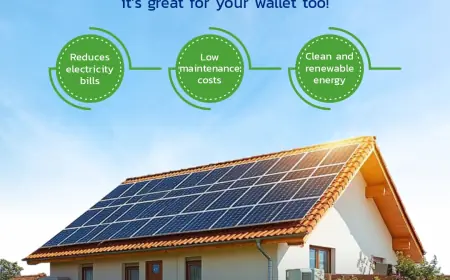Environmental Testing Market: Growth, Dynamics, and Forecast to 2034
Environmental testing involves the measurement and analysis of environmental parameters such as air, water, soil, and waste.

The environmental testing market has seen steady growth in recent years, driven by increasing concerns over pollution, climate change, and regulatory compliance. The market, valued at approximately USD 10.27 billion in 2024, is projected to grow at a CAGR of 8.1% from 2025 to 2034, reaching an estimated USD 20.70 billion by 2034. This article explores key aspects of the market, including its size, growth drivers, trends, opportunities, and competitive landscape.
Overview of the Environmental Testing Market
Environmental testing involves the measurement and analysis of environmental parameters such as air, water, soil, and waste. This testing helps to ensure compliance with environmental laws, supports sustainability initiatives, and aids in public health protection. As industries and governments across the globe strive to reduce their environmental impact, environmental testing has become a critical part of regulatory frameworks and corporate responsibility.
Key Services in Environmental Testing
Environmental testing services typically cover:
- Water Testing: Assessing the quality of water sources for contaminants, including heavy metals, microorganisms, and hazardous chemicals.
- Air Testing: Measurement of pollutants like particulate matter (PM), volatile organic compounds (VOCs), and industrial emissions.
- Soil Testing: Analyzing soil composition for pollutants such as pesticides, heavy metals, and organic contaminants.
- Waste Testing: Evaluating waste products for harmful chemicals and substances before disposal or recycling.
Get a free sample request link : https://www.expertmarketresearch.com/reports/environmental-testing-market/requestsample
Types of Environmental Testing
Environmental testing can be classified into several categories based on the type of testing and the specific environmental factor being measured:
- Chemical Testing: Identifying the presence of harmful chemicals in air, water, and soil.
- Microbiological Testing: Testing for microbial contamination, including bacteria, fungi, and viruses.
- Physical Testing: Assessing physical parameters like temperature, turbidity, and viscosity.
Environmental Testing Market Size
The global environmental testing market size reached approximately USD 10.27 billion in 2024. This robust market size reflects the growing demand for environmental testing services in industries such as agriculture, manufacturing, pharmaceuticals, and construction. As regulations on environmental protection tighten, the need for consistent and reliable testing grows across both developed and emerging economies.
Growth Drivers Behind Market Size
Several key factors contribute to the steady market growth:
- Stringent Government Regulations: Governments worldwide are enforcing stricter environmental protection standards. These regulations mandate regular testing, driving the demand for services.
- Industrial Expansion: As industries expand, particularly in emerging markets, environmental testing ensures compliance with environmental standards and minimizes ecological damage.
- Rising Environmental Awareness: Public awareness of environmental issues, such as pollution and climate change, has driven a shift towards more sustainable business practices, which includes environmental testing.
Environmental Testing Market Share
The market share of environmental testing services is distributed among various segments, including testing by industry and region. The largest market share is typically held by the air and water testing sectors, due to their direct impact on human health and regulatory scrutiny.
Market Share by Region
- North America: This region holds a significant share, led by the U.S., which has well-established environmental regulations.
- Europe: Europe is also a key player, especially in water testing, due to the European Union's stringent environmental laws.
- Asia-Pacific: The fastest-growing region, driven by industrial expansion and increasing environmental concerns in countries like China and India.
- Rest of the World: Emerging economies in Latin America, the Middle East, and Africa are witnessing growing demand for environmental testing services.
Market Share by Service Type
- Water Testing: Dominates the market, accounting for a large share of the overall environmental testing industry due to its importance in public health and regulatory compliance.
- Air Quality Testing: The growing need to monitor pollution levels is propelling air quality testing as a major market segment.
- Soil and Waste Testing: These segments are seeing consistent growth, especially with increased agricultural activities and rising waste management concerns.
Market Dynamics and Trends
The environmental testing market is shaped by various dynamics, including regulatory pressure, technological advancements, and increasing environmental awareness. Some key trends driving the market are:
Key Market Dynamics
- Technological Advancements: Innovative testing technologies, such as remote sensing and artificial intelligence, are improving the accuracy and efficiency of environmental testing, enabling real-time monitoring.
- Rising Demand for Sustainable Practices: Increasing corporate emphasis on sustainability and green certifications is pushing industries to invest in environmental testing to meet environmental, social, and governance (ESG) goals.
- Integration with Digital Platforms: The integration of environmental testing with digital platforms, such as cloud-based data management systems, is allowing for easier data collection, analysis, and reporting.
- Growth in Developing Regions: Rapid industrialisation and urbanisation in regions like Asia-Pacific and Africa are resulting in more environmental testing as these regions adopt global standards for environmental protection.
Key Trends in the Market
- Automation of Testing Processes: The shift towards automated and digital tools in environmental testing is improving both speed and accuracy.
- Increased Investment in Green Technologies: More companies are investing in sustainable technologies and products, leading to a heightened need for environmental testing.
- Emerging Contaminants Testing: With new and complex pollutants emerging, such as pharmaceutical residues in water, testing for these contaminants is becoming more critical.
Environmental Testing Market Growth
The environmental testing market is expected to grow at a CAGR of 8.1% between 2025 and 2034, reaching USD 20.70 billion by 2034. This growth is driven by increasing regulatory pressure, heightened environmental concerns, and an expanding global population that demands stricter environmental safeguards.
Factors Contributing to Growth
- Regulatory Mandates: Governments are imposing stricter environmental monitoring standards, particularly in the wake of climate change, water pollution, and deforestation.
- Global Sustainability Goals: As nations and corporations work toward achieving sustainability goals, there is a growing emphasis on transparent environmental monitoring.
- Advancement in Analytical Technologies: Improved analytical and detection technologies are making environmental testing more efficient and affordable.
Environmental Testing Market Opportunities and Challenges
Opportunities
- Growing Demand in Emerging Economies: With rapid industrialisation, developing nations offer significant growth opportunities for environmental testing companies.
- Technological Innovations: The development of next-generation testing solutions, such as IoT-based sensors and AI-powered analysis, presents new market opportunities.
- Expansion of Water Testing: As water scarcity becomes a more pressing issue, the need for water quality testing is expanding, particularly in regions where freshwater resources are limited.
Challenges
- High Costs: The cost of implementing advanced testing technologies may be a barrier, particularly for small and medium-sized enterprises (SMEs).
- Regulatory Complexities: Compliance with ever-changing global regulations can be challenging for testing companies, requiring continuous adaptation.
- Environmental and Political Instability: In certain regions, environmental testing markets may be impacted by political instability or lack of regulatory enforcement.
Competitor Analysis in the Environmental Testing Market
The environmental testing market is competitive, with a large number of established and emerging players. Key players typically offer comprehensive testing services that cover multiple environmental parameters.
Leading Players
- Thermo Fisher Scientific: A major player in environmental testing, known for its broad range of products and services.
- Agilent Technologies is a global leader in providing innovative solutions for environmental testing. Known for its advanced analytical instruments and technologies, Agilent offers comprehensive environmental testing services, including air, water, and soil analysis. Their solutions are widely used in research, industry, and regulatory compliance, with a strong emphasis on precision and accuracy.
- Eurofins Scientific: Known for its cutting-edge testing and laboratory services, Eurofins plays a key role in the global environmental testing landscape.
- Intertek Group: Offers a wide array of testing services, with a focus on environmental impact assessments and sustainability solutions.
What's Your Reaction?
 Like
0
Like
0
 Dislike
0
Dislike
0
 Love
0
Love
0
 Funny
0
Funny
0
 Angry
0
Angry
0
 Sad
0
Sad
0
 Wow
0
Wow
0



















































